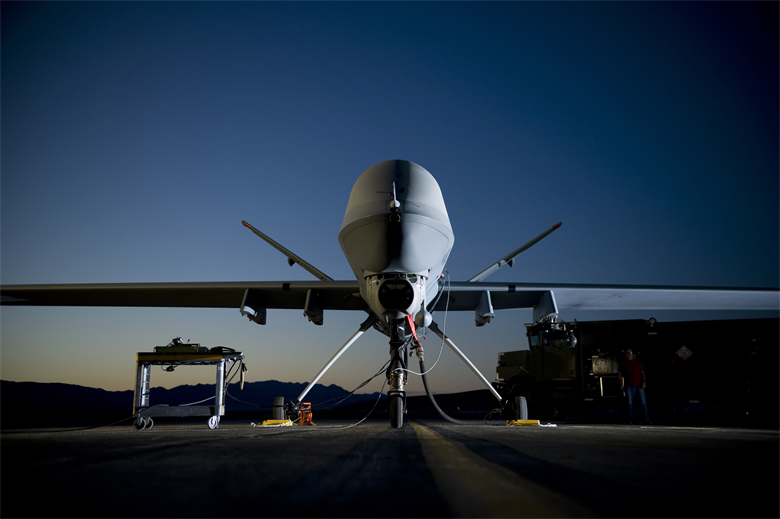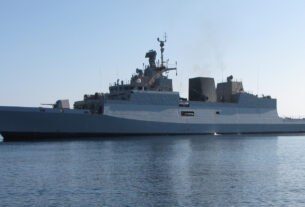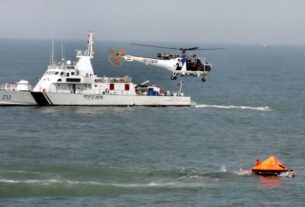Aerospace command and new concept of operations
Aerospace command and execution of new concept for operations are now at the heart of all warfare but the challenges are from over due to the need for better technology and higher management of conflict zones.
The challenges of emerging threats, new technologies, and the velocity of information demand more than a mere evolution of current C2ISR paradigms.
There is a need for radically new approach that capitalizes on the opportunities inherent in those same challenges.
Senior Leader Perspective to achieve future success through incremental enhancements à la CAOC 10.x upgrades—that method evokes an industrial-age approach to warfare that has lost its currency and much of its meaning.
One cannot meet the requirements of information-age warfare with “spiral development”; rather, one should have modular, distributed technological maximization that permits and optimizes operational agility.
That kind of agility calls for dramatic changes to C2 CONOPS (concept of operations); the organizational paradigms for planning, processing, and executing aerospace operations; and our acquisition processes.
It also demands a determined effort to match the results to the three critical challenges and opportunities while simultaneously fitting them seamlessly into the context of joint and combined operations.
One’s ability to C2 air and space forces will be affected by three major interrelated trends: emerging threats, new technologies, and the velocity of information.
The changes in these three areas since the design, establishment, and operation of the air and space operations center— the AN/USQ-163 Falconer—have been dramatic and are accelerating.
Therefore, it is time to determine whether we can achieve success in future operations by evolving our current concept of operations (CONOPS), organizations, and acquisition processes for modernization—or if one must seek fundamental change to each of these elements that affects theater air control system (TACS).
Before providing an answer, let’s take a brief look at each of the trends affecting the ability to C2 aerospace operations effectively.
The organization, size, and configuration of the AN/USQ-163 Falconer have basically remained the same since its inception.
According to the US Department of Defence’s report on Military and Security Developments Involving the People’s Republic of China, the People’s Liberation Army Air Force is pursuing modernization on a scale unprecedented in its history and is rapidly closing the gap with Western air forces across a broad spectrum of capabilities including aircraft, command and control (C2), jammers, electronic warfare (EW), and data links.
Such developments present a fundamental threat to the current American C2 construct. Additionally, other potential adversaries have studied the American way of war and have determined that it would be most advantageous to keep us out of their neighborhood rather than face our combat power.
Operations such as Desert Storm, Allied Force, Enduring Freedom, Iraqi Freedom, and Odyssey Dawn have repeatedly demonstrated the overwhelming prowess of American airpower.
Adversaries are adopting (and proliferating) anti access and area-denial (A2/AD) expertise—new generations of cruise, ballistic, air-to-air, and surface-to-air missiles; anti satellite weapons; and cyberspace capabilities intended to deny US forces freedom of action.
Failure to respond with new C2 thinking to these evolving A2/AD threats will force US to operate with greater risk and farther away from our areas of interest.
A2/AD threatens US ability to C2 air and space operations in three ways. Near-peer adversaries can employ kinetic and nonkinetic weapons to deny military communications and intelligence, surveillance, and reconnaissance (ISR) from space-based assets, thereby isolating US forces and blinding the leadership.
Cyber attacks—now evolving beyond mere hacking or denial of service—are becoming more sophisticated and may be used to intentionally disrupt operations at the combined air and space operations center (CAOC).
Accurate, long-range cruise and ballistic missiles are growing in their potential to threaten large, fixed, and exposed CAOCs.
As the most senior organizational element of the TACS and the factory for generating the air tasking order—the administrative vehicle for translating the combatant commander’s air strategy into executable plans—the CAOC becomes an extremely lucrative target.
This situation poses a question that challenges US conventional approach to C2. Can one deliver information to the war fighter at the tactical edge without having to rely on the traditional C/AOC model of hundreds of people organized in stovepiped divisions around segregated mission areas?
The answer will have cascading effects on the architecture that the US build to organize and operate C2 in the future—and the degree to which we enjoy operational success.
New Technologies Innovative technologies, which enable new capabilities, will require novel ways to C2 as a means of optimizing the production of desired effects.
One needs to think beyond the constraints that traditional culture imposes on new technology. For example, fifth-generation aircraft are termed “fighters,” but, technologically speaking, F-22s and F-35s are not just fighters—they are F-, A-, B-, E-, EA-, RC, AWACS-22s, and -35s.
They are flying sensor strikers that will allow US to conduct information-age warfare inside a contested battle space whenever it desires—if one can fully exploit their “nontraditional” capabilities in a fashion that becomes the new “traditional.”
Doing so will demand leading-edge networking capabilities and different approaches to solving the data-bandwidth issues.
For example, to accommodate the explosion in data growth from new sensors, instead of building bigger pipes to transmit all the collected information, one should process it on board and transmit only the data of interest to the users.
This approach inverts one’s current ISR processing methodology. Existing service-component integrated capabilities could enable advanced joint operational concepts.
For example, fifth-generation sensor strikers—F-22s and F-35s—could be used to cue Aegis fleet missile defense batteries to engage adversary anti-ship ballistic missiles launched against US carrier strike groups.
Fully capitalizing on these capabilities calls for an innovative way of designing naval force. As one brings a new long-range ISR/strike aircraft into the Air Force inventory to capitalize on the impact of long-range precision effects, one must amplify those effects through integration with the array of other forces by means of networked sensor/shooter capability from seabed to space.
Significant advancements in telecommunications, sensors, data storage, and processing power are emerging every day.
As a result, the targeting cycle has evolved from months to weeks to days to minutes, and from multiple, specialized, and separate aircraft assigned to separate commands, to “finding, fixing, and finishing” from one aircraft in minutes.
Consider just one example from Operation Iraqi Freedom. A Predator piloted from Nevada by the Air Force successfully spotted and identified a sniper who had pinned down a Marine ground force.
The remotely piloted aircraft delivered video of the sniper’s location directly to an on-site Marine controller who used it to direct a Navy F/A-18 into the vicinity.
The Predator had laser-designated the target for the Navy jet’s bombs, eliminating the sniper. The entire engagement took less than two minutes.
That is the synergy of precision and information we must achieve routinely. With an MQ-9 Reaper, the engagement could have been shortened further by combining the ISR sensors, designator, and weapons on one aircraft.
Although the increase in information velocity dramatically enhances the effectiveness of combat operations, one must contend with a downside.
As a result of modern telecommunications and the rapid transmission of information to, from, and between various levels of command, one should have many examples of “information age” operations in which commanders at operational and even strategic levels usurp tactical-level execution.
This devolution of the construct of centralized control / decentralized execution to one of centralized control /centralized execution has reduced effectiveness in accomplishing mission objectives.
One needs discipline to ensure that “reachback” does not become “reachforward.” Centralized control/centralized execution represents the failed Soviet command model that stifled initiative, induced delay, moved decision authority away from execution expertise, and bred excessive caution and risk aversion.
The results of such a model against a more flexible command structure were evident in 1991, when Soviet-sponsored Iraq unsuccessfully applied similar C2 constructs against the US-led coalition.
Higher-level commanders who are unwilling to delegate execution authority to the echelon with the greatest relevant situational knowledge and control suffer from their remote perspective, create discontinuity, and hamstring the capability of commanders at the tactical level to execute a coherent, purposeful strategic plan.
Growing accessibility to information requires the restructure of C2 hierarchies to facilitate rapid engagement of perishable targets and capitalize on technological advantage.
Information synthesis and execution authority must be shifted to the lowest possible levels, and senior commanders and staffs must discipline themselves to stay at the appropriate level of war.
As described earlier, advancing threats demand that one move beyond large, centralized, and static C2 facilities.
Replacing them with a mobile, distributed C2 structure that can handle the same volume and diversity of information as today’s regional CAOC will call for a reappraisal of how one deals with information flow.
The “art of command” will morph to realize Metcalfe’s Law network values while the “science of control” will continue to demonstrate Moore’s Law by expanding technology to extend human capacity.
The path for optimal growth of both is found through a focus upon gaining and maintaining a decision-cycle advantage as the critical path guide.




